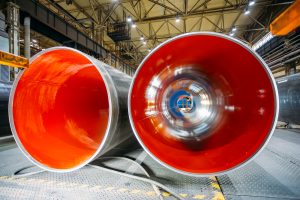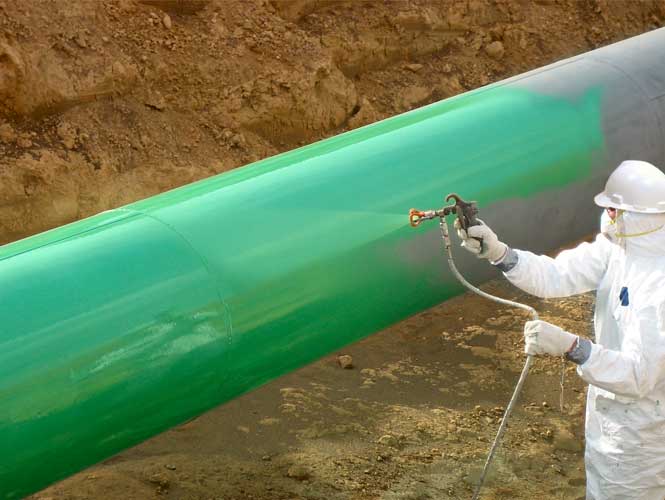
Understand the Benefits of Different Types of Oil Pipeline Coatings
Oil pipeline coatings are essential for protecting pipelines from external factors that can cause corrosion and damage. Different types of coatings offer different benefits for different applications, so it is important to understand the benefits of each type of coating before making a decision.
Polyethylene (PE) coatings are used for a wide variety of oil pipeline applications. These coatings offer excellent resistance to UV radiation and water absorption, making them ideal for outdoor applications. They also provide good abrasion resistance and are relatively easy to install. In addition, PE coatings are relatively inexpensive and have a long lifespan.
Epoxy coatings are also popular for oil pipelines. These coatings provide superior chemical resistance, making them ideal for applications where the pipeline is exposed to harsh chemicals. They also offer excellent adhesion and are relatively easy to apply. In addition, epoxy coatings are relatively inexpensive and provide a long lifespan.
Fusion bonded epoxy (FBE) is a type of epoxy coating that is often used for oil pipelines. FBE coatings offer excellent protection against corrosion and have good resistance to water, chemicals, and abrasion. These coatings are also relatively easy to install and can be used in a variety of applications.
Polyurethane (PU) coatings are an ideal choice for oil pipelines that need to be exposed to high temperatures. These coatings offer excellent thermal and chemical resistance, making them ideal for applications in which the pipeline is exposed to extreme temperatures and chemicals. In addition, PU coatings are relatively easy to install and provide a long lifespan.
When choosing a coating for an oil pipeline, it is important to consider the benefits of each type of coating and select the one that best meets the needs of the application. Each type of coating offers different benefits, so it is important to understand the benefits of each type before making a decision.
How to Choose the Right Oil Pipeline Coating for Your Project
The selection of an appropriate oil pipeline coating is an important part of a successful oil pipeline project. The type of coating used depends on the application, environmental conditions, and the type of oil being transported. It is important to select the correct coating to ensure the durability and performance of the pipeline.
When selecting the right pipeline coating, there are several factors to consider. The first is the application. Different coatings are available for different applications, such as internal or external pipelines, and for different types of pipe, such as carbon steel or plastic.
The environment in which the pipeline will operate also needs to be taken into consideration. Different coatings are designed to provide protection from corrosion in different environments, such as salty air or high humidity. It is important to choose the right coating to ensure the longevity of the pipeline.
The type of oil and chemicals being transported through the pipeline must also be taken into account. Different coatings are designed to protect against different types of oil and chemicals, so it is important to choose a coating that is compatible with the type of fluids being transported.
Finally, the cost of the coating must be taken into consideration. Different coatings have different costs, so it is important to consider the budget for the project when selecting a coating.
By selecting the right oil pipeline coating for your project, you can ensure the durability and performance of the pipeline. It is important to consider the application, environment, type of oil, and cost when selecting the right coating for your pipeline project.
An Overview of Common Oil Pipeline Coating Options
The use of oil pipelines is a common and efficient way to transport oil from one place to another. In order to ensure their longevity and effectiveness, they must be coated with a protective layer. There are several types of oil pipeline coating materials, each of which provides unique benefits. This article will provide an overview of the most common oil pipeline coating options.
Fusion-Bonded Epoxy (FBE) is a popular choice for oil pipeline coatings. This coating is applied as a powder and then heated to form a protective layer. FBE provides excellent corrosion protection and is highly resistant to chemicals, UV rays, and abrasion. It is also an effective barrier against microbial contamination.
Polyurethane is another common coating for oil pipelines. This material is applied as a liquid and provides excellent resistance to chemical attack, UV rays, and abrasion. It is also highly resistant to microbial contamination and has a long lifespan.
Polypropylene is another popular choice for oil pipeline coatings. This coating is applied as a powder and provides excellent corrosion protection, UV resistance, and thermal insulation. It is not as durable as FBE or polyurethane, but is still a reliable option.
Glass-Fiber Reinforced Plastic (GFRP) is a newer oil pipeline coating option. GFRP is applied as a liquid and provides excellent corrosion protection and thermal insulation. It is also resistant to UV rays and abrasion, making it an effective barrier against microbial contamination.
Finally, there are several other types of coatings used for oil pipelines, including asphalt, zinc, and galvanized steel. Asphalt provides good corrosion protection and is a cost-effective option. Zinc and galvanized steel are more expensive but provide superior corrosion protection.
No matter which type of coating is used, it is important to select the right option for the environment and the application. Each type of coating has its own benefits and drawbacks, so it is important to do research and speak to a knowledgeable professional before making a decision. Properly coating an oil pipeline is an essential part of ensuring its longevity and effectiveness.
Exploring the Advantages of Polyethylene and Fusion-Bonded Epoxy Coatings
Polyethylene and fusion-bonded epoxy coatings are two of the most effective and widely used coating systems for pipes and pipelines. Both of these coatings offer superior protection against corrosion and abrasion, making them ideal for a variety of industrial applications. In this article, we’ll explore the advantages of both polyethylene and fusion-bonded epoxy coatings, including their unique advantages over other coating systems.
Polyethylene is a highly durable and flexible material that can be applied to surfaces with a variety of methods. It is often used as a pipe coating because of its ability to resist corrosion, abrasion, and environmental conditions. Polyethylene is also highly resistant to chemicals, which makes it ideal for use in industrial settings. Additionally, polyethylene is cost-effective and easy to install.
Fusion-bonded epoxy (FBE) is a multi-layer coating system that is composed of a primer coat and a topcoat. It is applied through thermal spraying, which ensures that each layer is evenly distributed and securely bonded to the pipe surface. FBE is extremely resistant to corrosion and abrasion, making it a popular choice for pipelines in harsh environments. It is also highly resistant to chemicals and heat, and has a long lifespan.
When compared to other coating systems, polyethylene and FBE coatings have a number of advantages. For starters, they are both highly durable and resistant to corrosion, abrasion, and environmental conditions. Additionally, both polyethylene and FBE coatings are cost-effective and easy to install. Furthermore, polyethylene and FBE coatings are both highly resistant to chemicals, making them ideal for industrial applications.
Overall, polyethylene and fusion-bonded epoxy coatings are two of the most effective and widely used coating systems for pipes and pipelines. They offer superior protection against corrosion and abrasion, making them ideal for a variety of industrial applications. Additionally, they are both cost-effective and easy to install, and offer excellent chemical resistance. As such, these coatings are a great choice for any industrial setting.
Comparing the Different Protective Properties of Oil Pipeline Coating Materials
The oil industry relies on pipelines to transport its precious liquid cargo from one location to another. To ensure that these pipelines remain safe and reliable, they must be properly coated with materials that provide effective protection from corrosion, abrasion, weathering, and other environmental factors. Different types of coatings have varying levels of protective properties, so it is important to understand the differences between them.
One of the most common pipeline coating materials is polyethylene (PE). This material is highly resistant to corrosion, is lightweight, and is relatively cost-effective. It is also resistant to ultraviolet light and has low permeability, meaning that it is effective at keeping moisture and other contaminants out of the pipe.
Fusion-bonded epoxy (FBE) is another popular choice for pipeline coatings. It provides excellent protection against corrosion and is highly durable. FBE is more costly than PE, but it is also more resistant to weathering and abrasion.
A third option is liquid-applied epoxy (LAE). This material is more expensive than PE and FBE, but it offers superior corrosion protection. LAE also has low permeability, meaning that it can effectively keep moisture and contaminants out of the pipe.
Finally, polyurethane (PU) is a more expensive option compared to the others, but it offers superior protection from weathering, abrasion, and corrosion. PU is also highly flexible, making it ideal for pipelines in areas that experience extreme temperatures or seismic activity.
Each of these pipeline coating materials has its own unique set of protective properties, so it is important to consider what type of environment the pipeline will be operating in when making a selection. By understanding the differences between these materials, oil companies can ensure that their pipeline investments are protected for years to come.

